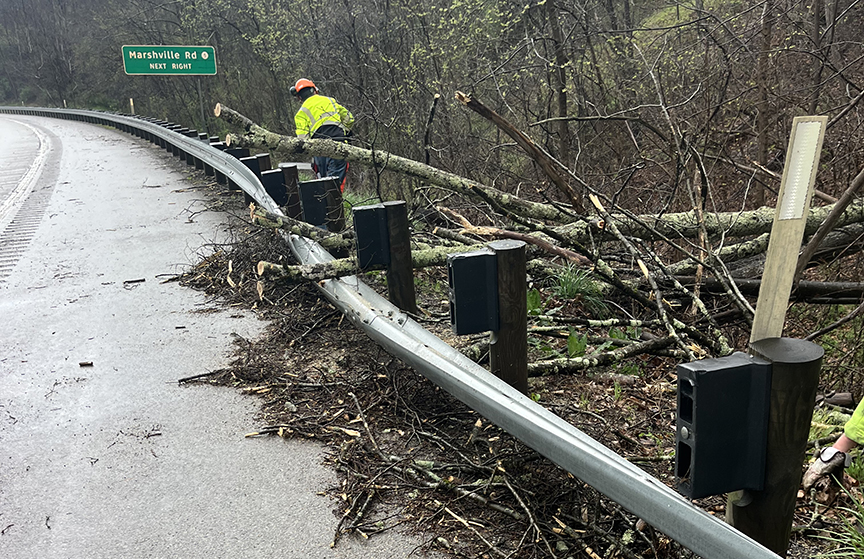A total of 26 counties in West Virginia are now under a state of emergency declaration following heavy rains, tornadoes and storms last week, and the heavy rains and storms that hit the state on April 11.
Gov. Jim Justice has amended last week’s State of Emergency to include Boone, Braxton, Calhoun, Doddridge, Gilmer, Harrison, Jackson, Logan, Mingo, Ritchie, Roane, Tyler, Wayne and Wirt counties.
The initial group included Fayette, Kanawha, Lincoln and Nicholas counties on April 2, and then two days later, the governor added Barbour, Brooke, Hancock, Marshall, Ohio, Wetzel, and Wood counties. On April 8, Justice added Pleasants County.
West Virginia Division of Highways (WVDOH) road crews continue to work to assess and clean up damage caused by a massive storm that moved through the state on April 11.
Most of the state had been under a tornado watch until 9 p.m. Thursday. Tornadoes did not materialize, but high winds and a largely stationary storm front dumped record amounts of rainfall on the Kanawha Valley and other parts of West Virginia, leading to mud and rock slides, downed trees and flash flooding.
Some parts of the state received five inches of rainfall in the space of several hours.
WVDOH Chief Engineer of Operations Joe Pack said the worst of the flooding was concentrated north of Interstate 64.
As of 2 p.m. Friday, April 12, multiple roads remained closed by high water in Kanawha, Cabell, Jackson, Clay, Mason, Lincoln, Pleasants, Wood, Doddridge, Harrison, Marion, Monongalia, Morgan, Brooke, Marshall, Ohio, Tyler and Wetzel counties.
In Kanawha County, record rainfall overwhelmed storm drains on Interstate 64 near the Greenbrier Street exit, flooding the interstate. WVDOH work crews waded into the rushing water with rakes to clear the drains by hand.
Pack said that, once the water recedes, WVDOH road crews can assess any damage to the roadway and plan any repairs.
The State of Emergency declaration is a proactive measure ensuring the allocation of necessary resources and expediting emergency response efforts. It allows state and local agencies to take swift and decisive actions to mitigate the dangers to protect the lives and property of West Virginians.
Residents are encouraged to remain vigilant and monitor official emergency management and local media accounts for updates.
Last week, Justice issued a State of Preparedness for all 55 counties, which is still in effect.
Important links:
